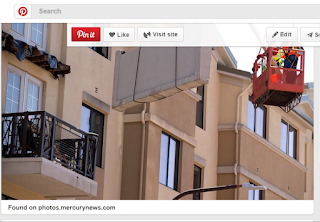“The plaintiffs and/or cross-complainants’ own carelessness and negligence may have proximately contributed to the events and damages complained of..."
Those are the words in a filing from R Brothers Waterproofing attorneys on why the balcony in Berkeley collapsed last year, killing 6 people and leaving seven more with serious injuries and a lifetime of horror.
It gets worse, R Brothers lawyers is trying to blame everyone else too - here they throw the architect under the bus. They may have a point but you don't follow shitty plans either...
"R Brothers Waterproofing also claims the “designs of others” that it had no responsibility for were to blame for the injuries complained of.
“This answering defendant did not select, design or approve the allegedly defective components,” it says under the heading of “causation”.
It also said it had no notice of any alleged defects and that the injuries alleged “were caused by third parties’ deficient work or products”.
So in California when one is looking at plans and one knows, as the licensed expert waterproofing contractor that they are, that the design is wrong, you don't bid it. Secondly if it did slip by that the design was wrong and you did bid it, when you got to the job and saw what you were doing, you stop and don't do the work until an RFI is made and a decision is issued by the architect and the general contractor. R Brothers apparently covered wet substrate with moisture trapping membranes and wants to say they aren't responsible?
 |
| So if R Brothers is saying this detail is wrong, why did they apparently follow it? Inquiring minds want to know. |
Even worse, they say in their filing if we are found negligent, it's secondary to others negligence...excuse me but WTF?
I see it fairly simply-you check the moisture content of your plywood with a simple moisture meter. If it's higher than 14-16% then you say can't do it...and the problem is especially compounded when/if it was a double layer of OSB that's soaking wet. It would take weeks of dry weather if ever to get that moisture content down to acceptable levels.
Bottom line, the attorneys are POS scumbags IMO for even suggesting the victims had anything to do with their deaths and injuries.



















